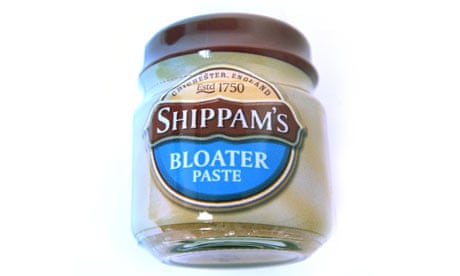It's time to mark the passing of yet another year of misery and chaos brought about by TR and the endgame really could be in sight. The trouble is, none of us know what it is and that includes the MoJ. One thing's for sure though - it is all about the money, when we all know it should be about the person, but that's what ignorance and politics have done for us.
As always, thanks for reading and contributing. Following a period of steady decline, interest is picking up once more and I detect signs of a new defiance and determination amongst those that remain to 'tell it as it is'. A bolshy workforce was always identified as a key risk by the MoJ right at the beginning of project TR and this blog will remain as a platform for anyone with something sensible to say on the subject.
I'll sign off with some fascinating exchanges seen recently on Facebook:-
Can I ask how people are consistently hitting that ridiculous 10 day ISP target. I ask because some recent cases have come up that DRR delius attendances within 24 hours of sentence have triggered off this 10 day target, when in fact CRC have only been informed of the sentence after 2 weeks! I'm told some pull through or do a very basic ISP with a view to reviewing asap! I just want to try and hit an actual target and not be placed on a hitlist for once.
We had problems where an appt was kept with us, starting the 10 days, but then a week or so in we were belatedly informed the person had kept an earlier appt with a partner agency which triggered the deadline earlier than expected and meant a rush job was required. The advice at the time was to pull something (anything!) through to hit the target and review in better quality ASAP (tho given the never ending flood of ISPs ASAP never arrived for me).
That's shocking but I'm not surprised. I said to my SPO today should I just pull through blank pages to hit a target and then review it as those on top of these tables are doing just this. I saw someone for the first time and was chuffed to actually complete an ISP within 2 hours of our first meeting. It was a failed target as he'd seen a partnership agency before me! so I stormed into my managers room shouting WTF do I do.
Is this for CRC or NPS? In NPS, we are told that the 10 days only start counting from when the 'initial contact' goes on any ndelius. So a partner agency wouldn't be able to trigger this.
We are CRC but it is still when the contact goes on Delius. In my situation I had seen him on the Friday, but a week later a contact from our DRR drug partnership was put on for the Tuesday before - which meant my ISP should have been done 3 days earlier than I realised.
The clock starts at any intervention following sentence even if the person never actually attends an OM appt. I've done a few on people I've never met (and who subsequently got breached for no OM contact at all).
The clock starts at any intervention following sentence even if the person never actually attends an OM appt. I've done a few on people I've never met (and who subsequently got breached for no OM contact at all).
Great example that sums everything up as well as the target pressures we all feel.
No it's the first appt even with agencies - it's crap innit?
We do a paper ISP at induction which is hit and miss as often have no CPS etc and as usually seen on duty - have no time to assess properly!!
Are you in London? Our ISP's only count if on OASys
No apparently it was part of the bid - I thought only oasys counted as well but we have 30 days to do oasys as long as the paper one is done. Trouble is that it includes a risk assessment part which is impossible to do without precons so it's either left blank till we get these or based on information from the offender- neither is good!!
....only specific 'initial contact' starts the clock. Not planned office visit or other contact. If partnerships are recording their apts as initial contact you need to have a word and change it to other apt, drug key work apt etc. X
Just what I was going to say, only the person responsible for doing the assessment should be recording the "initial contact", I assume it means "initial contact with Offender Manager". However, doesn't this need to be within 5 days of sentence or it misses another target? (Theoretically you then have 15 working days to do ISP)?
CP initial contact will trigger the 10 day target as well as clicking the custody release button.
Yea, absolutely right. The initial contact Delius entry has to be offered/recorded within 5 days...x
I left for maternity leave in Nov so it may have changed since but I know I've definitely had to do a few ISPs for people who attended DRR appts and never triggered the Initial Contact as did not show for me. I remember as I made a big deal about the waste of time (a week prior to leaving) in building objectives for someone I was recommending had his sentence revoked for non compliance.
Get the initial data recorded as something other than lnitial Appointment then it does not trigger the 10 day.
Unfortunately data analysts get on our back to either change or ensure that initial delius contacts are correctly applied. Appears to be more people watching and analysing delius entries than practitioners these days!
Always ask for advice from your manager in writing. My experience is there is no pull through no CPS and no one to interview. Target gets missed. Avoid the hit list by asking each case by case in written what you should do. Only an idiot would put you on the list.
Those lists make me feel like an idiot especially after seeing cases for the first time and completing an assessment within 24 hours only to find out I missed that target. I threw my arms In the air the other day in my managers room shouting 'WTF am I supposed to do'.
Paper ISP at induction is all we're managing!
We have been told that it only counts if it is a full pasts, that is signed and locked (NPS anyway). That is from the performance team. X
Just to clarify! The delius entries from partnership agencies are entered by a central CRC hub in our area. That makes me laugh as one recent case was allocated to me via a different CRC hub nearly 2 weeks after the CRC partnership hub had entered that initial DRR contact. Hubbadubdub I say!
As always massive inconsistencies in practice around the country - I have no idea why some areas can do paper ISP and others have to do full oasys!!
We're dealing with the standalone UPW cases, manage cases from the hub by phone whilst they're in another county. Which is challenging. Then there's the caseloads of 260 and the never ending breaches, my colleague had 22 in 3 days last week. And half of them are bound to be rejected by NPS. Gah!!
A hub from another country! Sounds like a sci-fi film title! Did you get a response, I never did so I'm looking to take cases back to Court due to an inability to cater for diversity.
Ok. I would do the basic to clear the 10 days target and set a review date to do the OASYS interview. You must do the review on time though. You must also use the start code on Delois outlining what you have done and the date you complete. Realistically you do not have 10 days. The assessment is run over night. We need to be smart.
That's interesting as well as being strategic. I'll discuss this approach with the team. Thanks.
--oo00oo--
Totally agree have stopped doing Sheriff Recorder funds as I ain't got time to go shopping with clients.
I only do them for those showing progress rather than rewarding those who continue to reoffend.
This used to be a fund that specifically said was not to be disclosed to clients. Word gets out though and I often find myself saying 'what have you actually done that entails me seeking and supporting funding for you' I also find myself saying 'no you can't buy top range trainers!'
They've been told by prison staff that you probation officers will work wonders.
One of the most valuable support structures of the past few years was the introduction of Engagement Workers from User Voice. They worked the wonders that gave a realistic and generic approach to resettlement. So they were then dropped despite being a priceless resource to us practitioners.
--oo00oo--
Happy New Year!
Footnote
The Sheriffs' & Recorder's Fund was born in the exciting days of social progress at the beginning of the nineteenth century. As with Elizabeth Fry later, it was the horrors of Newgate Prison, where prisoners had to pay for their own food and children lived with their condemned parents in filth and fear, which stirred the Sheriffs of the City of London into action.
In 1808, when public hangings were still taking place outside the debtors' door of Newgate, Sir Richard Phillips, of whom this portrait is in the National Portrait Gallery, and Alderman Sir Christopher Smith of the Worshipful Company of Drapers and later Lord Mayor of London, started a fund to help inmates and their families.
The Fund provided grants to enable prisoners and their destitute dependants to buy food, clothing, footwear, coal and candles. Later, emigration grants to begin a new life were added It was a remarkable philanthropic venture, way ahead of its time.
The first donors were all individuals, led by the Lord Mayor of London and the Bishop of Durham. Poor Boxes at the prisons were the forerunners of Life Governors, 200 Club donors, Legators and Livery Company Charity committees. All through its existence, the Fund has relied on the generosity of individuals and institutions in the City of London.
The first administrators of the Fund were the London Prison Chaplains and in 1828 trustees and a treasurer were appointed, but there are few solid records until the middle of the nineteenth century when in 1845 the Duke of Cambridge attended the first official fund-raising event, a dinner at the Mansion House. In 1846 the first donation by a Livery Company, the Cutlers, is recorded. The most consistent Livery Company supporter appears to be the Armourers and Brasiers, who have been giving since 1876.
The first annual report appeared in 1846 when the objectives of the Fund were described as ‘the temporary relief of the distressed families of persons in confinement; a temporary provision for persons who on being discharged from confinement have no means of present subsistence and habitation; the purchase of such tools, implements and materials as may be conducive to habits of industry in debtors and criminals’. Two hundred years on, the Fund’s mission is remarkably similar: training, tools, equipment and clothing to help ex-offenders find their feet and a way forward.
From the outset, the Fund recognised the innocence of prisoners’ dependants and the particular problems of women ex-prisoners whose family responsibilities limited their ability to earn; grants for mangles and sewing machines appeared regularly – the nineteenth century equivalents of washing machines and clothing.
The need for decent clothing was consistently supported. For example, in 1887 the Fund provided 284 hats, 106 skirts, 102 jackets, 120 bodices, 38 chemises, 54 pairs of stockings and 96 petticoats. During the Second World War under rationing secondhand clothing and blankets were available from the Fund’s office in the Old Bailey.
--oo00oo--
Happy New Year!
Footnote
The Sheriffs' & Recorder's Fund was born in the exciting days of social progress at the beginning of the nineteenth century. As with Elizabeth Fry later, it was the horrors of Newgate Prison, where prisoners had to pay for their own food and children lived with their condemned parents in filth and fear, which stirred the Sheriffs of the City of London into action.
In 1808, when public hangings were still taking place outside the debtors' door of Newgate, Sir Richard Phillips, of whom this portrait is in the National Portrait Gallery, and Alderman Sir Christopher Smith of the Worshipful Company of Drapers and later Lord Mayor of London, started a fund to help inmates and their families.
The Fund provided grants to enable prisoners and their destitute dependants to buy food, clothing, footwear, coal and candles. Later, emigration grants to begin a new life were added It was a remarkable philanthropic venture, way ahead of its time.
The first donors were all individuals, led by the Lord Mayor of London and the Bishop of Durham. Poor Boxes at the prisons were the forerunners of Life Governors, 200 Club donors, Legators and Livery Company Charity committees. All through its existence, the Fund has relied on the generosity of individuals and institutions in the City of London.
The first administrators of the Fund were the London Prison Chaplains and in 1828 trustees and a treasurer were appointed, but there are few solid records until the middle of the nineteenth century when in 1845 the Duke of Cambridge attended the first official fund-raising event, a dinner at the Mansion House. In 1846 the first donation by a Livery Company, the Cutlers, is recorded. The most consistent Livery Company supporter appears to be the Armourers and Brasiers, who have been giving since 1876.
The first annual report appeared in 1846 when the objectives of the Fund were described as ‘the temporary relief of the distressed families of persons in confinement; a temporary provision for persons who on being discharged from confinement have no means of present subsistence and habitation; the purchase of such tools, implements and materials as may be conducive to habits of industry in debtors and criminals’. Two hundred years on, the Fund’s mission is remarkably similar: training, tools, equipment and clothing to help ex-offenders find their feet and a way forward.
From the outset, the Fund recognised the innocence of prisoners’ dependants and the particular problems of women ex-prisoners whose family responsibilities limited their ability to earn; grants for mangles and sewing machines appeared regularly – the nineteenth century equivalents of washing machines and clothing.
The need for decent clothing was consistently supported. For example, in 1887 the Fund provided 284 hats, 106 skirts, 102 jackets, 120 bodices, 38 chemises, 54 pairs of stockings and 96 petticoats. During the Second World War under rationing secondhand clothing and blankets were available from the Fund’s office in the Old Bailey.
As well as its close relationship with the City, over the past century the Fund has grown closer to the Law. In 1931 the Fund merged with the Recorder’s Fund for ‘assistance of cases on probation’. When the Old Bailey south wing was built in 1970, on the site of Newgate Prison, the Corporation of London generously gave the Fund the financial life-saver of a small office from which it still operates.
So, in its modern form, the Fund works mainly through the Probation Service. The two City of London Sheriffs and the Recorder of London are its Presidents and Vice-President, and the individuals and corporate bodies of the City of London its main supporters.
A remarkably consistent City institution, doing good in a fundamental way for over 200 years.

















